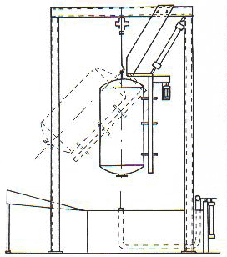|
Pretreatment
prior to Porcelain Enamelling
|
|
The
process of Porcelain Enamelling includes following operations in sequence:
· pretreatment of steel surface · application of Porcelain Enamel and eventual drying · firing of the coating Each operation can be carried out separately or integrated with the others as transport of the boilers through corresponding department or line can be independent or common to previous and next one in order to reduce manpower for transfer. Pretreatment and enamel application of boilers are typically intermittent operations. If integrated on one common line, advancement of pieces for drying and firing will be intermittent too. Usual pretreatment to Porcelain Enamelling includes following stages: chemical degreasing, acid pickling, neutralizing and drying. Inside surface of tanks to be Porcelain Enamelled must be cleanable; the drawing compounds should be of a soap-film type of vegetable oil. To avoid are drawing compounds containing pigments, silicones, waxes, graphite, and such as mineral oils that are very difficult to remove with the chemical degreasing and, if allowed to remain on the surface, will turn to a gas and/or reduce adhesion during further Porcelain Enamelling processing, causing quality and increment of costs. Chemical degreasing using alkaline solutions is widely used for cleaning of the surface to get rid of oils and other impurities. Removal from the surface of scale caused by welding and of eventual rust may be accomplished by different methods. The commonest one is pickling with a dilute aqueous solution of sulphuric acid. Shot blasting is also used if the boiler has the requisites, particularly adequate bottom execution and bottom opening. Both pickling and sandblasting provide an etched tank surface to enhance the mechanical bond of the porcelain enamel layer and the steel. After pickling traces of acid and iron salts, which may cause various defects are removed by washing with water and following neutralizing solution. The wet cleaned boiler must be quickly dried inside to avoid corrosion. Accurate inspection of boiler inside after pretreatment and before Porcelain Enamel appli-cation is recommended. |

